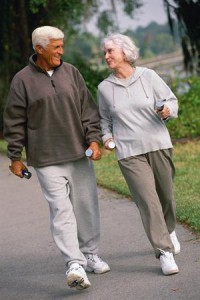
Worldwide, stroke is the second leading cause of death. According to the World Health Organization, 15 million people suffer from strokes each year.
A stroke occurs when blood flow, and thus oxygen flow, to the brain is stopped. The symptoms of a stroke depend on the area of the brain affected. In some cases a person may not know that he or she is having a stroke.
Because it’s imperative for people to get to the hospital as quickly as possible, you should familiarize yourself with the warning signs provided by the National Stroke Association’s Act FAST campaign:
- Face – When he/she smiles does one side of the face droop?
- Arms – Can he/she raise both arms without one drifting downward?
- Speech – When asked to speak is his/her speech slurred?
- Time – If you observe these signs, call 911 immediately.
Other possible symptoms include:
- A sudden headache that gets worse when changing positions, bending or coughing
- Change in alertness (e.g. sleepiness, unconsciousness)
- Loss of senses (e.g. difficulty hearing, tasting, seeing, feeling pain or pressure)
- Confusion or loss of memory • Dizziness, vertigo or loss of coordination
- Numbness or tingling on one side of the body
Recovering from a stroke can be an emotional, frustrating process for both the patient and their loved ones. Stroke victims must overcome physical, cognitive and emotional challenges including:
- Loss of mobility, movement, or feeling in one or more parts of the body (e.g. nerve, joint, and/or muscle damage)
- Difficulty communicating and/or understanding language (e.g. aphasia)
- Problems thinking or focusing (e.g. memory problems, poor judgment)
- Difficulty swallowing, poor nutrition
- Bladder and bowel problems
Regardless of the severity of your stroke, it is critical to take a proactive and informed approach to your post-stroke care. While leaving the hospital setting can be daunting, the return home is a major, positive step in the recovery process.
